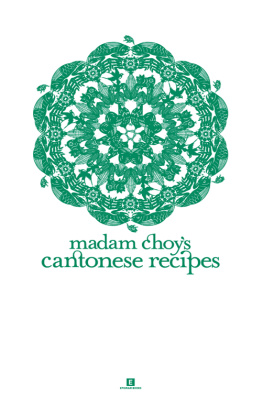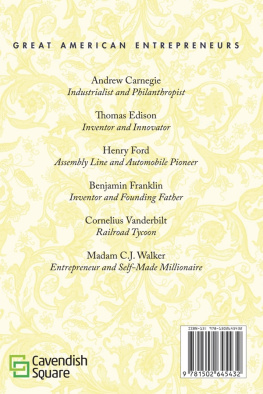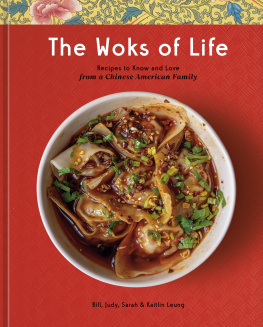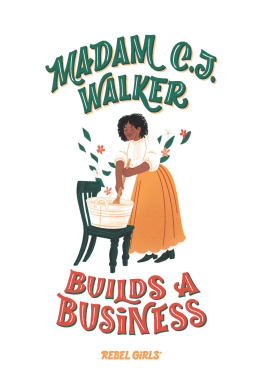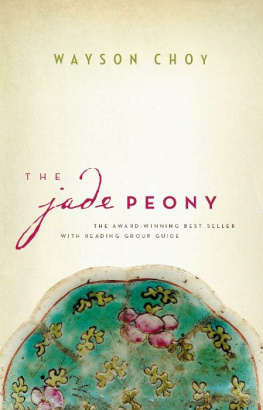
MY MOTHER WAS BORN 85 years ago in Kuala Lumpur of parents who emigrated from Guangdong province in China. They would soon move to Seremban, in the Malaysian state of Negri Sembilan, where eleven other children followed in quick succession. Only seven, including my mother, survived and the family occupied the corner terrace house just outside the town where my grandfather became a prominent businessman. Besides the family, there were several mui jye, young bonded maids from China who came with my grandmother when she got married, a handful of adopted daughters, and in later years, several servants hired from the town.
The Chooi household (my mothers surname was changed to Choy by an inept bureaucrat) was large and noisy, under the command and control of my grandmother. The children led carefree lives while being educated in schools that put little if any pressure on them. The elder daughters were matched in their mid-teens with prospective husbands and the boys were sent to prestigious schools in Penang and groomed to take over the family business.
The dinner table was always bountiful, and soon every family member was a food critic commenting on every mouthful, from simple snacks to exquisite banquet dishes. It was little wonder that my mother soon learned what good food was. But with maids and servants handling all the work, she did nothing in the kitchen and showed little interest, and never learned even to boil water!
At 16, my mother, then a slip of a girl and still in school, married my father, Loke Seck Cheong, and moved to Singapore, where she found herself in a terrace house off Jalan Besar. Here, my paternal grandmother ruled the house, including the kitchen, a tiny cubicle with a charcoal stove. A stern matriarch who doted on her son and grandsons, Grandma Loke discussed the daily menu with our black-and-white amah, ng chay (fifth sister). Breakfast before school was rice with fish, meat and vegetables. Ham was unheard of, although my father had three soft-boiled eggs every morning, a practice that stopped when cholesterol crept into our vocabulary. Daily meals were simple but tasty enough.
Back in Seremban, the situation was the complete opposite. At years end every year after the War, my mother took us two girls and two boys to Seremban to join our numerous cousins, who had grown in number after another aunt and uncle got married. Grandma and Second Aunt who married Mothers younger brother, with help from two maids and the now-elderly former maids who visited frequently, churned out huge meals several times a day. Visiting daughters like my mother would help in simple tasks. Together, they served up mid-morning and afternoon snacks and supper, plus the three main meals. As the extended brood grew, it became clear the tiny kitchen between the inner hall and the toilet at the back was inadequate.
Around the late 1950s, Grandpa Chooi bought the empty land next to the house and built an enormous kitchen the size of a small flat. It had a row of burners, a big round table that could seat a dozen or more, and numerous storage shelves and cupboards. Here, the women folk gathered to peel and pluck, stir-fry and simmer to feed the holidaying hordes at regular meal times and in between. This was when we kids picked up the art of food tasting.
Second Uncle had the most discerning palate and would comment on every dish. Even the cows milk, delivered each morning in bottles by dhoti-clad men on bicycles, then boiled and served salted or sweetened slightly, was deemed either rich and full-bodied or flat and not fragrant. Others would pitch in, especially when the food was below par.
From the time we third-generation children could walk and talk, we had learned that texture and fragrance were as important to food as taste. Noodles should spring off the teeth (darn ngah) which is more descriptive than the Italian al dente. Fried dishes must have wok hei, long before western food writers called it the breath of the wok. Steamed fish should be smooth (waht) and just cooked, indicated by a slight redness near the bone. The dough of prawn dumplings (har gau) should be translucent and springy, and not stick to the teeth. Sharks fins, in those pre-conservation days, should have sufficiently firm body (gau sun) which meant a bite that was not hard like a stick of carrot nor soft like jelly, and different from darn ngah noodles. And the crackling of roast suckling pig must have a light crispness (soong chooi). We also knew that sweet (teem) was not necessarily sugary and gum, which sounded like the word for gold, was a tangy taste that had no equivalent in English.
Street and fast foods were not spared; from roadside apom pancakes to A&Ws curly-cue fries, they all came under scrutiny. One house specialty was love letters, the crisp coconut and egg biscuits, made every year as gifts for the Chinese New Year. The production line was set up in the air well. Three open charcoal fires baked the paper-thin sheets in three flat cast-iron clams, operated by three aunts or maids for days on end. Each sheet would be peeled from the open clam and folded with a chopstick into triangles and fitted into large Milo tins. When cool, they were feather light, and when bitten, released a wonderful coconut fragrance. The sheets were so fragile that when rolled into cigar shapes, they broke easily in the tins. Family connoisseurs would walk by and grab a handful to make sure they were of the usual high standard they claimed. Today, no store-bought love letters can match those in texture or fragrance.
During the durian season, Second Uncle would come home with an industrial-sized basket of the spiky fruit and Grandpa would open them one at a time. Uncle would taste a seed from the first fruit and comment on the fragrance, texture and taste. If it was deemed good, we would all dive in. If not, the whole fruit would be tossed aside and another cracked open. Durians that were not overly ripe were described as having yellow flesh in a dry pouch (wong yoke gon bau). Small, shrunken seeds were known as seed-sucking good (jueet wut). Bitter-sweet (foo teem) was an acquired taste and came only from good durians. If the flesh was wet (siok), unripe (sarng bau) or bland (tarm), it would be discarded. One by one, the whole basket of durians would be polished off with the rejects untouched.
Back in Singapore, meals remained the predictable meat, fish and vegetables, until 1957 when we moved to a big house with a long, large kitchen. It had sky-blue cabinets that reached the ceiling, a double sink at one end, a gas hob with an oven below, and a round marble-top table that could seat six. For the first time, my mother felt she had a kitchen of her own. The meek newly-wed girl had meanwhile grown into a confident, though less svelte, woman and began experimenting with dishes she had learned from Seremban. Together with a neighbour, an excellent cook who made melt-in-the-mouth Swiss rolls, my mother went to cooking classes. She kept recipes from newspapers and magazines, expanding her repertoire by adapting them to her own taste.
While ng chay continued to produce the standard fare, my mother began turning out fancy dishes like double-boiled soup with whole chicken stuffed with birds nest for special occasions. Whenever there was steamed chicken or braised duck, it would be one of our birthdays (but no cakes and candles nor presents). The dinner table would be covered with dishes, almost always with a soup. When we had dinner guests, the finest crockery was brought out and the meal would be a tour de force
Next page
